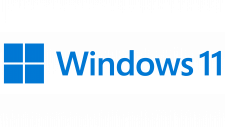WordPress Logo
WordPress is a versatile content management system (CMS) that empowers users to create websites without needing deep coding knowledge. Originating in 2003 as a blogging tool, it has evolved to support diverse web content types. Notably open-source, it’s become a favorite for both beginners and developers due to its user-friendly interface and vast plugin ecosystem. With a large global community backing it, WordPress continually updates for better security and features, catering to roughly 40% of all websites online today. Whether for personal blogs or e-commerce platforms, it’s a dominant force in the web creation arena.
Meaning and history
WordPress began its journey in 2003, originating from a desire to enhance typography for everyday web writing. Created by Matt Mullenweg and Mike Little as a fork of the b2/cafelog platform, it initially emerged as a simple blogging tool. However, its simplicity and flexibility led to its swift rise in popularity.
Open-source from its inception, WordPress’s growth was fueled by a passionate community of developers and users. Over the years, it has expanded its capabilities from mere blogging to a full-fledged content management system (CMS), capable of powering various types of websites, from online portfolios to e-commerce platforms.
Themes were introduced in 2005, allowing users to customize the appearance of their websites without touching the underlying code. This innovation was followed by the introduction of plugins, enabling further extensibility and versatility. These plugins, developed both by the core WordPress team and the broader community, catered to diverse needs, from SEO optimizations to e-commerce functionalities.
The subsequent years saw continued improvements in user experience, including the introduction of the “Gutenberg” block editor in 2018, which aimed to make content creation more intuitive.
Acquisitions also played a role in shaping WordPress’s journey. Automattic, a company founded by Mullenweg, acquired WooCommerce – a popular e-commerce plugin, further solidifying WordPress’s position in the online shopping domain.
While the core software remains free, a vast ecosystem has emerged around it. Web hosting, premium plugins, themes, and specialized WordPress services have become industries in their own right.
Today, WordPress boasts a significant online presence, powering roughly 40% of all websites on the internet. Its success lies not just in its software but in the vibrant community that’s grown around it – a community dedicated to open-source principles, collaboration, and making the web accessible to all.
2003 – 2008
Initiated on May 27, 2003, the platform made its debut to the digital world. This introduction not only showcased its capabilities but also presented a unique emblem. Dominating the left, a distinctive “W” sat within a black orb, bordered by a contrasting shade and complemented by a luminous white aura. Adjacently, the term “WordPress” took its position, segmented by colors – the initial segment in a shade of azure, while its latter half was portrayed in jet-black, all underscored by a linear mark.
2008 – Today
The creators maintained the dichotomy of text hues while eliminating the underscore to offer a more streamlined and succinct appearance. In the revamped iteration, there’s a shift in tones: the blue transitions to a softer shade, while the stark black evolves into a muted gray. Nevertheless, the typography, contours, scale, and arrangement of characters stay unchanged. Such continuity signifies WordPress’s commitment to unwavering reliability and its dedication to upholding its distinct aesthetic.













